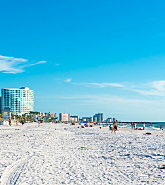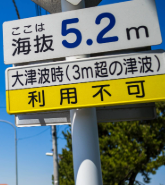The White House released The National Climate Assessment this week, warning of the severe weather impacts of climate change that will affect every American. For the past decade, RMS has engaged deeply with the climate science community around issues related to climate change and catastrophe risk. Questions around the potential for extreme storms or other climatic events beyond everyday observational experience are challenging for climatologists. However, catastrophe modelers have always had to explore ways to surmount this challenge, and for this reason, RMS catastrophe expertise was harnessed to provide lead authorship in two recent IPCC assessment reports.
Catastrophe models, which are designed to assess shifts in the occurrence of extremes and quantify climate risks today, can also be employed to explore the expected impacts and costs of climate extremes in the future.
The White House National Climate Assessment provides an excellent introduction and summary of our state of knowledge around climate change impacts in the U.S. How do we think about these questions from the perspective of catastrophe modeling?
Some aspects of expected climate change relate to variations in means, such as mean-maximum and mean-minimum daily temperatures, or mean rainfall. Some relate to extremes, which are what really interest us—in particular, hurricanes, winter storms, severe convective storms, and intense precipitation events.
As we well know, the number of intense hurricanes in the Atlantic has increased since the mid-1990s. However, these increases have not simply turned into increases in U.S. landfalls, as the additional storms tend to form and recurve farther to the east.
RMS has led the insurance and reinsurance industry with its annually reviewed five-year, forward-looking, medium-term hurricane rates. The rates are developed using a range of statistical analyses and an elicitation of leading experts in the field. Whether measuring decadal variations or long-term trends, the methodology ensures that as evidence emerges for climate change affecting hurricane landfalls, it will be incorporated in our best assessment of “current” hurricane activity.
The medium-term methodology also serves as a template for how we will assess the influence of climate change as evidence emerges around other perils and regions around the world—whether typhoons in China, windstorms in Europe, or tornadoes and intense hailstorms in the U.S. For example, scientists are actively debating whether climate change has been influencing the seasonality, geography, severity, or clustering behavior of severe convective storms. Model users may be interested to explore the implications of this debate for alternative perspectives on hazard activity.
In addition, intense rainfall events in the U.S. have become heavier and more frequent over the past few decades. This increase was observed to be greatest in the Northeast, Midwest, and upper Great Plains, where, since 1991, the amount of rain falling in very heavy precipitation events has been 30 percent above the 1901-1960 average. While we have not seen a climate change signal in flooding from larger rivers, we might expect to see a trend of local flash floods in these regions.
Many may not be aware that they could be affected by the potential impacts of climate change. Sea level projections are very critical for siting infrastructure and property along the coasts, but less so for annually renewed insurance coverages. Nearly five million people live within four feet of high tide. Four feet also happens to be toward the upper end of projected sea level rise through the 21st century. Those who live on the coast may not realize that future risk will depreciate the value of their homes.
While debates on climate change are often highly polarized, as a catastrophe modeler, RMS has a simple neutral perspective: to best represent the expected activity of extremes over the next one to five years.
By quantifying the ways in which risk can be reduced, we aspire to help society manage risk better and to create a safer and more resilient world. The robust availability of catastrophe insurance creates the right incentives to drive risk reduction and enable more-rapid recovery following a disaster. However insurance products cannot handle questions of long-term changes in the landscape of risk. That is why catastrophe model outputs of future risk are critical to understanding the political, social, and economic implications of climate change.






